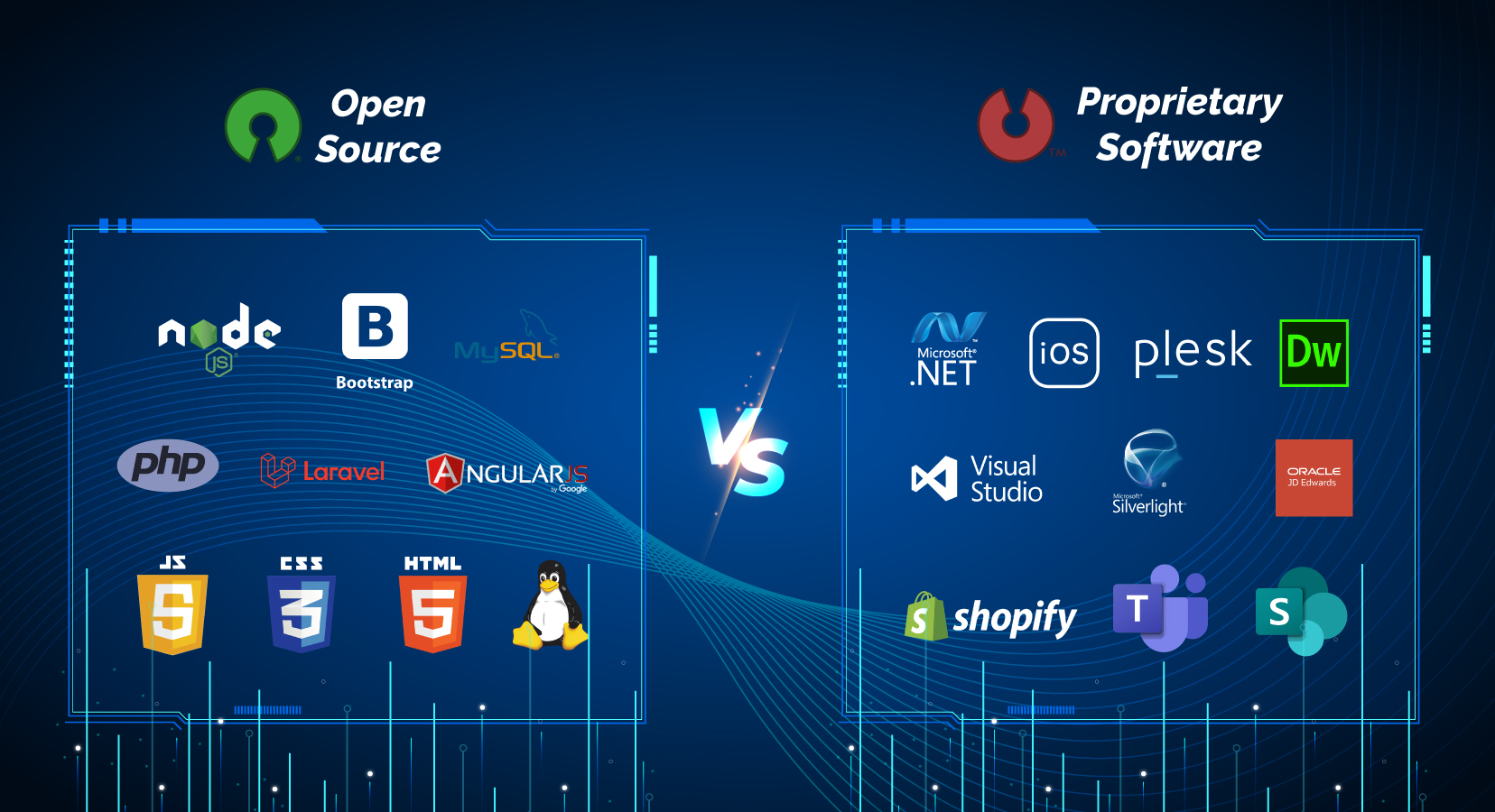
Ever heard the saying, ‘nothing good in life comes for free’? Well, that’s not always true, especially when we talk about software. This digital world provides us access to tons of open source software that is available for everyone. And that's not all. It doesn’t mean less quality or usability comparing it with those we pay for. The geeks at Ruckustech have compiled some ‘gyan’ on Open Source Software vs. Proprietary Software, their advantages & disadvantages, and how can you use them to your benefit.
The term open source refers to software whose source code — the medium in which programmers create and modify software — is freely available on the Internet. By contrast, the source code for proprietary commercial software is usually a closely guarded secret.
While the best-known example of open source software is the perhaps Linux operating system, but there are open source software products available for every conceivable purpose.
There’s more to it than free versus paid
The distinction between open source and proprietary software is not that one is free and the other is not. They are each based on differing philosophies, methodologies and business models. These fundamental factors are what lead to their separate sets of pros and cons, which must weighed within the context of each individual software development process.
Let’s dive right into the Pro’s and Con’s of Open Source and Proprietary software.
Understanding Open Source Software
It is the kind of software that is available for everyone in the world to use, and it unique, that its code is open to developers. But why such a software, you may ask. This makes possible that developers can alter the code until it works the best for a specific project they are participating.
Engineers and customers, even developers love this kind of software because they can save effort, work, and time using something that it was already developed, tried and tested. Besides, they can personalize this main code and adapt it to their necessities. How cool is that!
With Open Source Software, it’s possible:
- Get access to the source code.
- Permission to change the software.
- Free distribution of original and modified code.
- Having derived work that can be distributed under the same terms of original software.
- The same license of the original software. You can take a new license, but it is not necessary.
- By using it, it is not necessary that your program has to be open source too.
- The bigger motive is to promote the collaboration inside a community to generate mutual benefits.
Open Source Advantages:
- You can adapt it to your necessities even from source code.
- Replication and distribution is possible although you haven’t paid it.
- Free support because the same community that uses the software creates forums for discussion, documentation and debugging
- Fewer errors and faster solutions. Projects with open source could literally have millions of people looking it, using it, and getting better.
- It is universal.
Open Source Disadvantages:
- Limited warranty. This happens because lots of people have simultaneous access to it and can change it.
- Also usually Open Source software doesn’t have liability or infringement indemnity protection.
- Open source software can have compatibility issues, and solving them could cost a lot of money.
Understanding Proprietary Software
Proprietary software, has to be purchased should you wish to use it. This software belongs to someone else, but what does it mean? The code is locked, it is copyrighted, its use is limited at some point, especially when it is referred to distribution or modification.
Proprietary software also called commercial software or closed-source is unique and can often be modified only by the creators or certain parties/individuals authorized to do so.
Some of the most significant software programs that revolutionized the world till date were created using proprietary software.
Primary characteristics of proprietary software
- It has to be purchased
- Has a license which is the property of a developer, company or the owner
- Access to source code not freely available
- Free distribution or copy is prohibited and punishable
- Its use depends on the end-users agreement
Proprietary Software Advantages:
- This is perhaps the most critical advantage. Creators give you a software which has been designed, developed, deployed and proven to deliver benchmarked results even before you purchase it
- 100% warranty on security and reliability provided by the creators.
- Proprietary software is unique and one-of-its-kind
Proprietary Software Disadvantages:
- Higher cost in purchase and subsequent upgrades.
- Source code cannot be modified.
- Software cannot be shared or distributed.
- Software is totally dependent on creators for maintenance and up gradation
- Experts believe that proprietary software is less safe because security will depend on software creators

